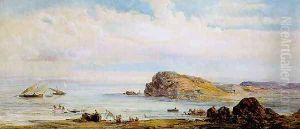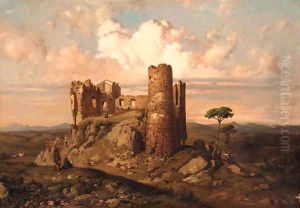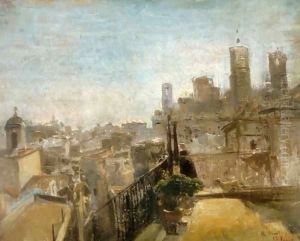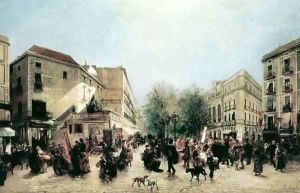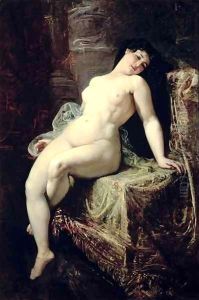Ramon (Marti) Alsina Paintings
Ramon Martí Alsina, born in 1826 in Barcelona, Catalonia, Spain, was a prominent figure in the world of 19th-century Spanish art. Alsina's artistic journey was deeply influenced by the socio-political changes of his time, including the turbulent periods of the Carlist Wars and the rise of Catalan nationalism, which infused his work with a sense of realism and historical consciousness. His early education in art was under the guidance of his father, Brugada, who was also a painter, but it was his later studies that truly shaped his artistic vision. Alsina was particularly influenced by the Barbizon school, a movement that advocated for realism in art and painting en plein air (outdoors), which led him to adopt a more naturalistic style in his own work.
Throughout his career, Alsina became known for his large-scale historical paintings, landscapes, and urban scenes, which often depicted the realities of contemporary life with a remarkable attention to detail and a profound sense of atmosphere. One of his most famous works, 'The Great Day of Girona,' exemplifies his monumental approach to historical painting and his skill in capturing the essence of dramatic moments in Spanish history.
Alsina's contributions to art were not limited to his own creations. He played a significant role in the Catalan art scene of the 19th century, both as a mentor to younger artists and as an advocate for the professionalization of the art world in Spain. His efforts helped lay the groundwork for the development of modernist movements in Catalonia and Spain at large.
Despite his success, Alsina's life was not without its struggles. Personal tragedies and health issues plagued him, particularly in his later years, but his passion for art remained undiminished. He continued to paint and exhibit his work until his death in 1894. Alsina's legacy lives on through his contributions to Spanish art, and his works continue to be celebrated for their historical significance and artistic merit.
